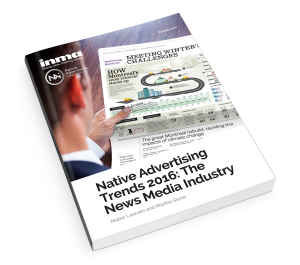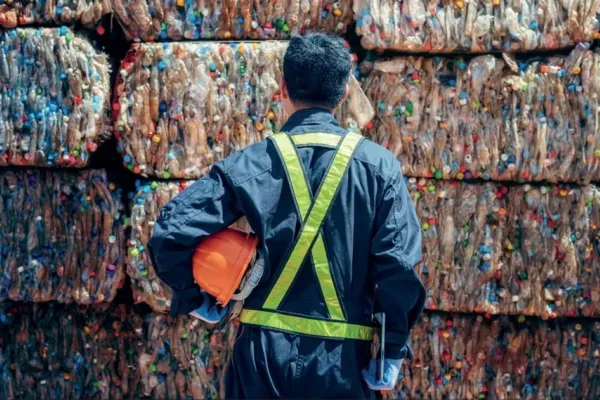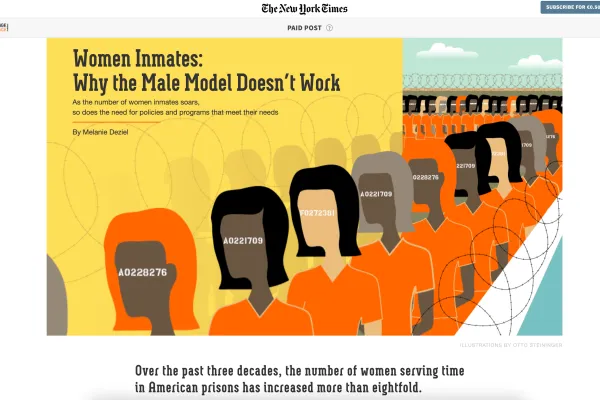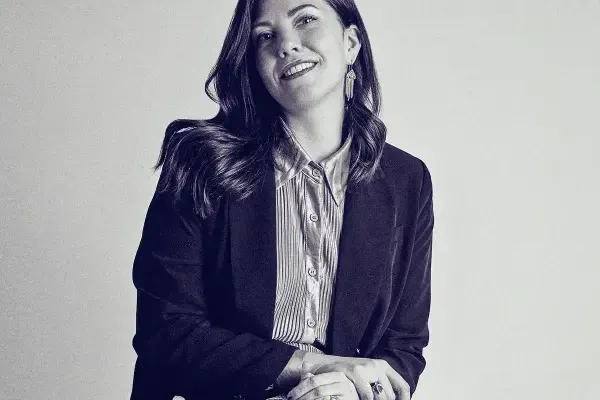 Details
Details
What are the biggest legal pitfalls of native advertising? How does Visa work with disclosure? Why is your work not done once the campaign is launched?
Ashley Fisher Counsel for Global Brand and Sponsorships at Visa Inc answers these questions and more in an interview recorded at the 2016 Native Advertising DAYS (you can spot her in the photo behind the palm tree).
Read more about this year's amazing conference and join us in Berlin.
Below are highlights from the interview which have been slightly edited for clarity.
How to be on the right side of the law
"From a legal perspective in terms of native advertising, the key is transparency and trust. You want to make sure that your consumer understands that it's an ad and that they know that before they start engaging in your content.
RELATED: Clear labelling increases reader appreciation of native advertising
It's actually really easy. I have to keep in mind that I'm a consumer as much as you're a consumer. So think about how you engage in content; you read it top to bottom, right? So you want to make sure that you're making your disclosure at the top and not at the bottom.
Early is always better and then you're on the up and up with the law.
You want to make sure — if you're watching a video — that you put it in at that first second. The second that probably nobody is engaging with anyway. Well, get your brand up there in the first place, and then you can do whatever you want with your content. Early is always better and then you're on the up and up with the law."
Working with disclosure at Visa
"At Visa, we teach our clients that organic disclosures are just as good as very stilted disclosures. So if we're dealing with say a video influencer, they can come right out and say, "hey I've teamed up with Visa and we're bringing you this great thing".
You don't have to say; this is an advertisement.
You don't have to say; this is an advertisement for Visa. We think the consumers are more competent than that. We think that they understand an organic disclosure, and we think that it's just as authentic and it works very well for us."
Transparency is not that complicated
"I don't think that the issue of transparency is all that complicated. I do think it's strange that a brand wouldn't want their brand up front. The whole point of putting content out there is, I would assume, to get some value for your brand.
RELATED: How Advertisers and Publishers Should Deal with the Ethics of Native
And so it's not just a legal obligation to disclose that it's a brand talking. It has everything to do with getting your brand up there, out there, in front. You want to do this. I don't think that we're actually talking past each other, I think it sometimes just feels that way, because when you see legal requirement you think, oh this must not be authentic or interesting. But it is. And it's good for everyone. Really you're building trust in your brand by being authentic and transparent."
Legal battles for native advertising in the future
"The future of legal issues with native advertising is going to be keeping up with the changing mediums. We have figured out how to accurately and adequately disclose in old mediums, now it's going to be figuring out; what's best in Snapchat? What's best in a Facebook live feed? And how do we accomplish that?
How do you keep up with the changing medium and still adapt to get that transparent disclosure?
We're moving into that right now and you see really interesting things for instance in Snapchat filters; the first second actually does say 'sponsored', but then it goes away. So when you snap a cute picture with your X-Men frame, you don't see the word 'sponsor', but I saw it as a consumer and so that's very smart.
RELATED: How AI and New Technologies Will Push the Limits of Native Advertising
In Facebook live you see a lot of really interesting partners that are doing sort of a branded window around the content. So you still get the brand in there, but you can post live. We did really interesting content for the Olympics with that kind of thing, and we got our disclosure in there.
So I think for the future it's; how do you keep up with the changing medium and still adapt to get that transparent disclosure."
Don't just disclose at the bottom
"The pitfall is thinking that if you put something at the bottom, you've done your job. The key to your disclosure obligation is before you engage in the content. And that's a really easy thing to miss because the general notion is; as long as I have it down at the bottom like in a disclaimer that's the same.
The shift right now is 'kids'.
And the message is clear from the regulators; that's not what we're talking about. We're talking about; get it up front, make it clear, make it understandable.
The shift right now also is kids. You have to be at an even higher standard. Kids don't understand 'presented by', they really only understand 'this is an ad'. So you're seeing a lot of attention paid to that, and I think if you're dealing with kids just say 'ad'.
Influencers in native are tricky
"Influencers are a great example of what makes advertising and native advertising tricky. When you control the content, when a brand controls the content, we have a lot more levers on making sure that we've got a disclosure.
RELATED: What To Look Out For With Influencers in Native Advertising
As soon as that obligation is actually in the hands of somebody else, it becomes a little bit trickier. So you have to partner closely with who you're working with. If you're working with an influencer or with a publisher; set expectations and say, "hi I have this obligation as a brand, but so do you as a publisher, and so you as an influencer. We're all in this game together, and we all have a legal obligation to disclose the connection between us. So let's just decide how we want to do that".
Monitor. Because somebody else is definitely monitoring and they're not the folks you would like to come knocking at your door.
And everybody is happy. As long as you have that conversation up front with an influencer about the ways you can do it, there's a lot of different options you can give them. I find that works best.
And then the other brand pitfall is to not monitor. You have to monitor, you have to check and see what your influencers are doing because somebody else is definitely monitoring and they're not the folks you would like to come knocking at your door. So monitor."
RELATED: Common Mistakes Brands Make with Influencer Marketing
Bring in the legal team early
"I would say that good advice is always to bring in your legal team early. We're here to partner with a brand, we're here to partner with a publisher and we are actually excited and eager to talk about new ideas and ways to disclose.
We aren't as creative, but we're definitely open minded.
We aren't as creative, but we're definitely open minded and I would love for people to remember that; that we're trying to help. We want to accomplish the same goals that our marketers do."
DOWNLOAD: Threats and opportunities according to news media publishers; Native Advertising Trends - the NEWS Media Industry




